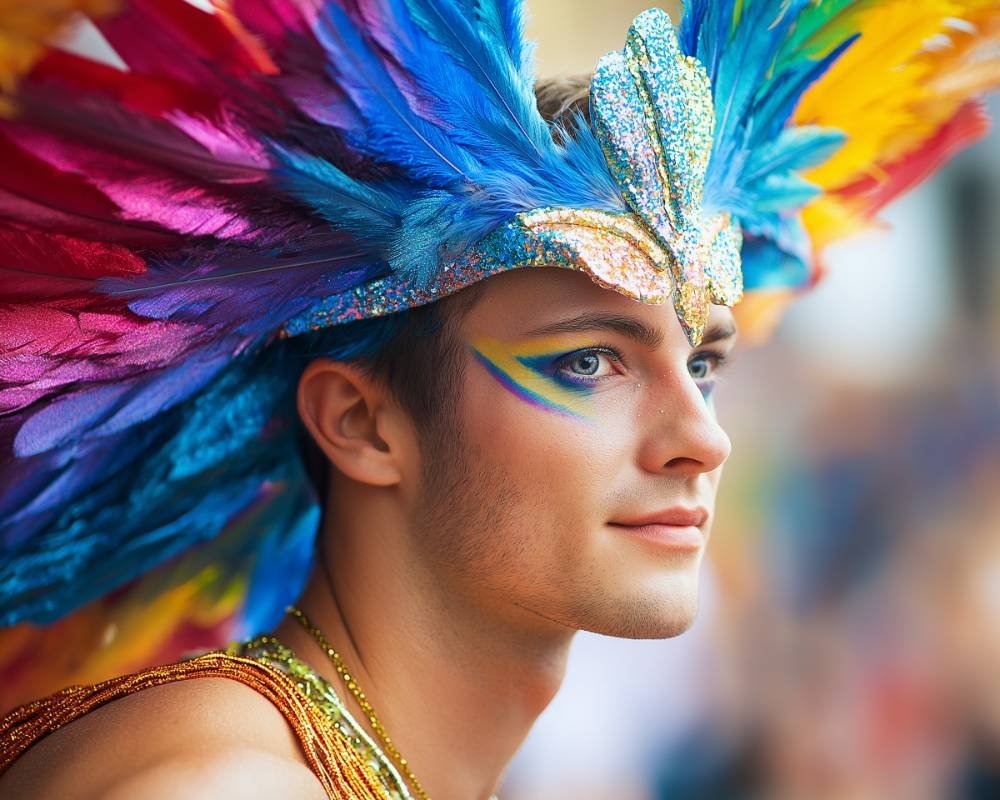
Exploring the History of Gay Pride Celebrations – June is recognized as LGBTQ+ Pride Month, a time dedicated to celebrating the diverse identities within the LGBTQ community. One of the most prominent events during Pride Month is the Gay Pride celebration. These festivals are held in cities around the world and are a time for the LGBTQ community to come together, celebrate their identities, and advocate for equality and acceptance. But where did these celebrations originate? In this blog post, we will be exploring the history of Gay Pride celebrations, from their humble beginnings to the global phenomenon they are today.
Gay Pride celebrations, also known as Pride parades or marches, have their roots in the Stonewall Riots of 1969. The Stonewall Inn, a popular gay bar in Greenwich Village, New York City, was raided by police in the early hours of June 28, 1969. The patrons of the bar, tired of being harassed and discriminated against, fought back against the police. The riots that ensued lasted for several days and are widely considered to be the catalyst for the modern LGBTQ rights movement.
The First Gay Pride Celebration
The following year, on June 28, 1970, the first Gay Pride march was held in New York City to commemorate the anniversary of the Stonewall Riots. The march, organized by activist groups like the Gay Liberation Front and the Gay Activists Alliance, drew thousands of participants who marched through the streets of Greenwich Village, demanding equality and justice for the LGBTQ community. This event marked the birth of the Gay Pride movement and set the stage for future celebrations around the world.
Growth and Expansion
In the years that followed, Gay Pride celebrations spread to cities across the United States and eventually around the globe. These events became not only a time for LGBTQ individuals to come together and celebrate their identities but also a platform for advocacy and activism. The rainbow flag, a symbol of LGBTQ pride, was first used at the San Francisco Gay Freedom Day Parade in 1978 and has since become synonymous with the LGBTQ rights movement.
Today, Gay Pride celebrations are not only a time for the LGBTQ community to come together but also an opportunity for allies and supporters to show their solidarity. These events are characterized by colorful parades, music, dancing, and speeches by activists and community leaders. They are a time to celebrate how far the LGBTQ rights movement has come and to recommit to the fight for equality and acceptance for all LGBTQ individuals.

International Impact
Gay Pride celebrations have had a significant impact beyond the borders of the United States. In countries where LGBTQ individuals face discrimination and persecution, Pride events can be a powerful tool for visibility and advocacy. In countries like Brazil, Mexico, and South Africa, Pride celebrations draw large crowds and are a time for LGBTQ individuals to come together in solidarity.
In some countries, Pride events are met with resistance and violence. In Russia, for example, Pride parades have been banned by the government, and LGBTQ individuals face severe discrimination. Despite these challenges, LGBTQ activists in Russia continue to organize underground Pride events to raise awareness and fight for their rights.
The Future of Gay Pride
As the LGBTQ rights movement continues to make progress, the future of Gay Pride celebrations looks bright. These events are not only a time for celebration but also a time for reflection and advocacy. They are a reminder of the struggles of the past and a call to action for the challenges that lie ahead.
In recent years, Pride celebrations have become more inclusive, with a focus on intersectionality and diversity within the LGBTQ community. Transgender and non-binary individuals, people of color, and those with disabilities are increasingly visible at Pride events, highlighting the importance of centering marginalized voices in the fight for equality.
Advertisement · Scroll to continue
Recommended
Conclusion
Exploring the History of Gay Pride Celebrations reveals the resilience and power of the LGBTQ community. From the Stonewall Riots to the global celebrations we see today, Gay Pride events have played a crucial role in the fight for LGBTQ rights. They are a time for celebration, advocacy, and solidarity, and a reminder of the progress that has been made and the work that still lies ahead. As we continue to push for equality and acceptance for all LGBTQ individuals, Pride celebrations will remain a vital part of the LGBTQ rights movement. Let us continue to march, dance, and celebrate together, for a more inclusive and just world for all.
Advertisement · Scroll to continue

More Recommended
Coming Out at Work: A Guide for Gay Professionals
Coming Out at Work: A Guide for Gay Professionals – Many LGBTQ professionals face a [...]
Marketing to Love: How Companies are Embracing LGBTQ+ Representation in their Advertising Strategies
to “Marketing to Love: How LGBTQ+ Representation is Transforming Advertising Strategies” Blog Content: As society [...]
Top 50 Businesses Owned by Gay Men
Top 50 Businesses Owned by Gay Men – Focusing on 50 Businesses Created or Owned [...]
What is an inspiring quote for LGBT? 30 Quotes
What is an inspiring quote for LGBT? 30 Quotes – Finding inspiration is essential for [...]
What Are the Best Gay Travel Tips?
What Are the Best Gay Travel Tips? – Traveling is a delightful experience, offering the [...]
How to Find Gay Mentors and Role Models
How to Find Gay Mentors and Role Models – Do you ever feel like you’re [...]
How Can I Find a Gay Community Near Me?
How Can I Find a Gay Community Near Me? – In today’s digitally connected world, [...]
What Is Gay Parenting Like?
What Is Gay Parenting Like? An In-Depth Exploration of LGBTQ Parenting, Families, and Childhood Experiences [...]
Top 6 Subaru Lesbian Jokes: Gay Cars, Great Vibes
Top 6 Subaru Lesbian Jokes: Gay Cars, Great Vibes – Laugh out loud with the [...]